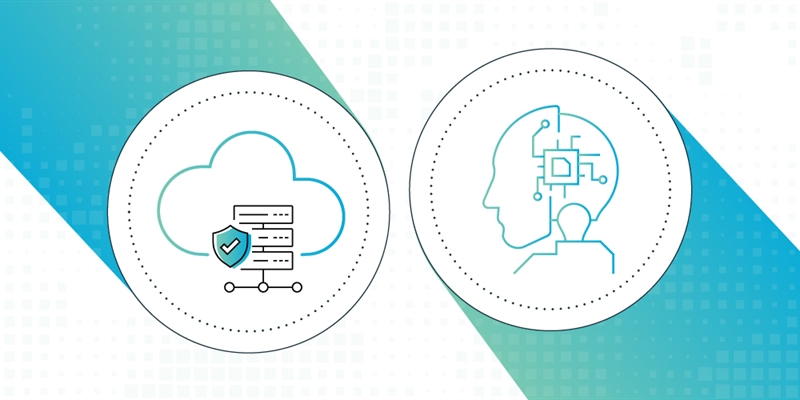Securing non-human identities is just as critical as managing human ones in today's complex IT landscapes. Non-human identities, such as service accounts, application identities, and IoT devices, play pivotal roles in automation and system integration. Managing these identities in hybrid environments, where on-premises Active Directory (AD) integrates with cloud-based Entra ID (formerly Azure AD), presents unique challenges. This blog explores how to secure non-human identities in such environments and the role of Active Roles in enhancing this security.
Understanding non-human identities in hybrid environments
Non-human identities refer to the digital identities assigned to services, applications and devices that require access to various resources. In a hybrid environment, these identities must be managed across both on-premises and cloud platforms, ensuring seamless integration and security.
Examples of non-human identities in AD and Entra ID
- Service accounts (AD): Used to run services and applications on Windows servers. Examples include:
- A service account running Windows service.
- A service account used by an IIS web application.
- A service account for backup software that requires access to file systems and databases.
- Group managed service accounts (gMSAs) (AD): Provide automatic password management and simplified service principal name (SPN) management for service accounts running on multiple servers. Examples include:
- A gMSA used by a web farm to run web applications across multiple servers.
- A gMSA for a cluster of servers running a distributed application.
- Application identities (Entra ID): Used by applications to authenticate and access resources. Examples include:
- An application identity for a web app that accesses an Azure SQL Database.
- An identity for a cloud-based service that needs to read data from a storage account.
- An application registration for a third-party app integrated with Microsoft 365.
- Managed identities for Azure resources (Entra ID): Automatically managed by Azure and used by applications running in Azure to access other Azure resources securely. Examples include:
- A managed identity for an Azure Function to access an Azure Key Vault.
- A managed identity for a virtual machine to access Azure Blob Storage.
- A managed identity for an Azure Logic App to interact with Azure SQL Database.
The Importance of securing non-human identities
Non-human identities often hold elevated privileges necessary for performing automated tasks and accessing critical resources. If compromised, these identities can become vectors for significant security breaches. Therefore, implementing robust security measures is crucial to protect your IT environment.
Storing non-human identities in Active Directory
Active Directory (AD) has long been a cornerstone of identity management for on-premises environments. Non-human identities in AD are typically managed as service accounts or group-managed service accounts (gMSAs). These accounts must be meticulously managed to prevent unauthorized access.
Key practices for managing non-human identities in AD
- Unique and descriptive naming conventions: Assign meaningful names to non-human identities to distinguish them easily from human user accounts.
- Least privilege access: Grant only the permissions necessary for the non-human identity to perform its tasks.
- Regular monitoring and auditing: Continuously monitor and audit these identities to detect and respond to suspicious activities promptly.
Storing non-human identities in Entra ID
Entra ID extends identity management to the cloud, accommodating non-human identities such as application registrations and managed identities for Azure resources.
Key features of Entra ID for non-human identities
- Application registrations: Create and manage application identities with specific permissions and access scopes.
- Managed identities for Azure resources: Securely manage identities for Azure services, eliminating the need for manual credential management.
- Conditional access policies: Implement policies that enforce additional security measures based on the context of access requests.
How Active Roles enhances security
Active Roles is a robust tool that significantly enhances the security and management of non-human identities in hybrid environments through the following features:
- Fine grained delegation: Active Roles allows for the creation of custom roles with specific permissions, ensuring that non-human identities have only the access they need.
- Automated provisioning and deprovisioning: Streamline the management of non-human identities by automating their lifecycle, reducing the risk of human error.
- Policy enforcement: Consistently enforce security policies across both AD and Entra ID, ensuring compliance and reducing security risks.
- Detailed auditing and reporting: Maintain comprehensive logs of activities performed by non-human identities, facilitating easy monitoring and auditing.
Implementing secure non-human identity management in hybrid environments
- Define clear security policies for the creation, management and decommissioning of non-human identities.
- Leverage fine-grained delegation in Active Roles by using role-based access control (RBAC) and attribute-based access control (ABAC) to assign precise permissions, minimizing unnecessary access.
- Automate identity management by implementing automated workflows in Active Roles to handle routine tasks, ensuring consistency and efficiency.
- Conduct regular audits and reviews of non-human identities to ensure compliance with security policies and detect potential issues early.
Conclusion
Securing non-human identities in hybrid environments is essential to maintaining a robust security posture. By leveraging Active Roles, organizations can manage these identities efficiently and securely across both on-premises and cloud platforms. Implementing best practices and utilizing advanced tools like Active Roles will protect your IT environment from potential threats and ensure seamless operations.
Secure your non-human identities effectively in hybrid environments with Active Roles. Enhance your security posture and streamline identity management processes today. Learn more about Active Roles and start your free trial now.



